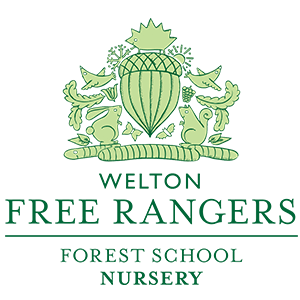Kid A nets a Great Diving Beetle larva while down at the pond, “Vince, omnivore, carnivore or herbivore?” It’s not only about tadpoles at Free Rangers. Our rickety trolley doubles up as the mobile outdoor lab. We load up with nets, magnifiers, pooters, pots, trays, brushes and field guides, and set forth on a bimble of discovery. First stop reptile refuge, which is a piece of heat absorbing roof felt. We approach in stealth mode, senses on full alert, I open the refuge...slow worm, toads, ground beetles, grass snake, wolf spiders, dart this way and that. Under a piece of old roof felt can lie a veritable nature reserve. On the way to the pond we swish nets through the long grass and check under stones logs for life.
In the far paddock lies the pond. After we’ve had a quick refresh on pond rules, it’s nets out and cat litter tray (minus cat) filled with water and on our bellies for a rummage in the pond. It’s not long before a Hawker Dragonfly larva is netted. Eventually this creature will become a magnificent, colourful flying machine, but for now it draws water in through its bum then fires it out to jet propel itself through the water. How cool is that. Try it in the bath. The pond has an overwhelming abundance of wildlife . Animals that run and fly off are super but a net full of life at the pond becomes a three year old’s gold to share with friends.

Contextual learning is the key here. Questions pour out when the subject is in the here and now, as in the palm of my hand actually. What is the difference between a frog and a toad, or between a snake and a slow worm? Is it a warm or a cold bloodied creature and what are they all doing here? What do they eat? These questions can ignite a lifelong passion for the wonders of natural world. Realising that we share this planet not only with incredible creatures from far flung places, but also with a back garden full of amazing wildlife on our door step is important.
Why is all this important? From a learning perspective firing up curiosity, questioning why X does this, behaves in that way and has adapted like that and Z like this is field science, fun science. Shapes, colours, forms are everywhere you look in nature. Numbers even get a look in when finding ladybirds and counting the spots on their wing cases.
Why is this important? You’d have to be living under a rock or in a log pile not to have heard about the decline in wildlife. Whose going to keep our countryside green and buzzing? Our children. They will face greater ecological challenges as adults than us. Nurturing a sense of awe, wonder and fascination of nature leads to a desire to protect what is precious to us. That’s the nuts and bolts of conservation.
What can you do? Go dig a pond in a sunny spot in your garden, watch it become colonised, and leave the gold fish at the pet shop if you like newts, frogs, dragonflies, diving beetles, water boatmen and more. Lay a piece of roof felt where the sun shines. Build a habitat pile and have areas of ‘scruffydom’ in your garden. That’s a start.

If you’d like to more about gardening for wildlife, come find me at Free Rangers. I’ll do my best to advise and encourage.
Oh, the answer to Kid A’s question: Carnivore. They catch prey in their large jaws then inject enzymes into the body. These enzymes dissolve the victim’s internal organs which are then sucked into the diving beetle larva’s mouth.
Happy non-gardening
Vince.
[nggallery id=26]
